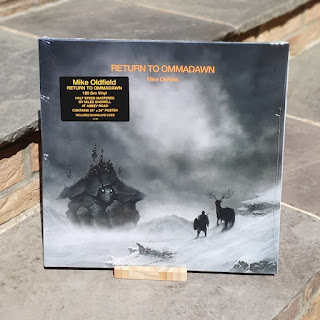In order to realise their new album the band elected to use a Fairlight CMI and relocate to AIR studios in Montserrat. Inevitably these changes leached into the record and the result can be something of an acquired taste.
One of the best examples of this new sound is the dub influenced title track which employs the Fairlight, plenty of percussion and some annoying horns. At the extremity "All Wrapped Up" goes for the full calypso experience and even includes a brass
arrangement courtesy of Tony Visconti. All well and good if you like that
sort of thing, but unfortunately I do not.
The version of "White Trash" on the album is far too slow and nowhere near as good as the demo available on the deluxe CD edition. "Locomotion" and "Tesla Girls" are catchy and you can hear that producer Brian Tench was determined to deliver some radio friendly singles here. Another single "Never Turn Away" is rather dull, but at least it doesn't have steel drums or other incongruous embellishments. "Hard Day" finds Andy singing in a different key to the rest of the band which creates a rather tortuous experience for the listener.
Closing track "Talking Loud and Clear" is a bit twee but it does seem to find a closer balance between sounding pop whilst remaining true to the natural sound of the band. My copy of this LP has the free 7" single with "The Angel Keeps Turning (The Wheels of the Universe)" which is five minutes of self indulgence that is only of interest to hardcore fans. 2/5







